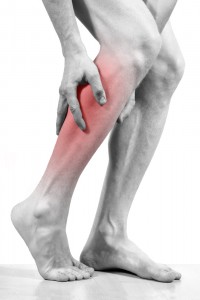The tibialis anterior is a muscle-tendon complex that extends down the front side of the shin. It consists of two parts: a muscle, and a tendon which is the sinewy part that starts from the bottom of the shin bone, goes over the ankle, and attaches to the foot at the apex of the arch. Even the mild pain experienced in this region can be very uncomfortable.
Causes and Treatments of Tibialis Anterior Pain
1. Tibialis Anterior Tendonitis
As one of the most frequent injuries of this area, tibialis anterior tendinitis is caused by excessive stress to the tendon. It often occurs in professional athletes as a result of heavy and continuous physical activity, but it can also occur in ordinary people as a result of running on bumpy surfaces. Rigid shoe lacing can cause this condition as well, as it can lead to tightening of the tendon.
And how can you recognize tibialis anterior tendinitis? Well, first you will notice a pain that worsens gradually and occurs either during an activity or after it. Many people have reported that the peak of their pain happens in the morning after exercise and it is almost impossible to kneel down without feeling the ache. In addition to this, you might be unable to comfortably point your toes.
Treatment:
If the tibialis anterior pain and the inflammation are too hard to tolerate, you can take anti-inflammatory drugs for relief. However, if you are pregnant, breastfeeding or are using other medications that might counteract with anti-inflammatory drugs, it is best to consult your doctor for suggestions.
If you don't feel like taking drugs, sticking to a RICE system (stands for rest, ice, compression and elevation) is a good way to accelerate the healing process, and subdue pain and inflammation.
- Rest: To rest means to avoid any physical activity that inflicts pain, and if necessary, the use of crutches is recommended to avoid stress on the leg.
- Ice: Apply ice packs to the injured area every 2-3 hours and leave them for 20 minutes. It is essential you do this regularly for the first 48 hours to reduce swelling.
- Compression: Applying a pressure bandage is another great way to reduce swelling; however, you need to be cautious when using this method. If you experience any discoloration of the foot or a numbing feeling, the bandage might be too tight, so loosen it up or consider removing it; otherwise you have the risk of developing ischemia due to the restriction of circulation.
- Elevation: Elevating the affected foot is also a great method to lessen swelling, and to accomplish it, you only have to put a couple of pillows under your foot to help raise it while you are lying.
2. Tibialis Anterior Muscle Strain
Another common cause of tibialis anterior pain is tibialis anterior muscle strain which develops as a result of frequent pressure on this muscle during, for example, climbing of the stairs or running on uneven ground. Some of the symptoms include:
- Big toe pain
- Pain in the external side of the shin and ankle
- Inflammation of the shin bone area
- Weakness of the ankle
- Foot drop
Treatment:
- Rest: Sufficient rest is of high value since it accelerates healing, and helps reduce swelling more quickly, so try not to put a lot of weight on the injured foot for a couple of days.
- Application of Heat and Ice: Apply ice packs to the affected region 2-3 times per day and leave them for 15-20 minutes. You should also use warm compresses to subdue the inflammation, but make sure to apply them after using ice packs.
- NSAID: NSAIDs, or nonsteroidal anti-inflammatory drugs, are often prescribed to alleviate the tibialis anterior pain and inflammation caused by the strain of this muscle. You may opt for medications such as ibuprofen or Tylenol.
- Wraps: Compression wraps are an excellent choice for treating strained tibialis anterior muscle! The healing process becomes much faster by using compression wraps which in addition helps reduce inflammation and swelling quite promptly.
3. Shin Splints
It is a condition that professional athletes are quite familiar with. It usually occurs in those who have lately increased their activity intensity and have overloaded the capacity of their muscles, tendons, as well as bones. Following the pain in the affected area, symptoms such as soreness and tenderness of the interior side of the shin, and swelling of the lower part of the leg may be present. Even though at the beginning, the pain stops once the training does, over the time it can become on-going and a stress fracture might develop.
Treatment:
Treating shin splints isn't that hard. In fact, you can do it yourself if you follow these steps:
- Rest: You should stay clear of any activity that brings you pain. However, mild swimming, running in the water and bicycle riding have proven to be great exercises that you can do even during your healing process.
- Ice: Apply the ice to the injured region 4-8 times per day and leave it for 15-20 minutes. Make sure the ice is wrapped in a towel to protect your skin from frostbites, and remember to keep repeating the treatment for a few days.
- Take a Pain Killer: Ibuprofen, Tylenol or naproxen sodium might be good choices for relieving tibialis anterior pain.
Note: You'd better visit your health care professional if the above-mentioned treatments do not work.

